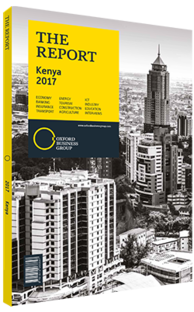Power trading to increase between Kenya and the region
Kenya’s power grid is in the midst of an international upgrade, featuring increased connection capacity with neighbouring Uganda, Tanzania and Ethiopia. The country’s potential as a power generator is significant, with supply already outstripping demand and geothermal sources in particular seen as an inexpensive, reliable option. Kenya’s existing reserve margin and plans for capacity additions suggest there is no pressing need to import power.
However, in a regional context the production potential of other countries is greater, and Kenya is focused on buying power from the lowest-cost producer in order to help maintain low tariffs for both industrial consumers and households.
Eapp
As a result the country has been playing a central role in encouraging greater regional integration. Discussions over improved regional power trading began in earnest in 2005, with a memorandum of understanding (MoU) signed by Kenya and six other countries (Burundi, the Democratic Republic of Congo, Egypt, Ethiopia, Rwanda and Sudan).
The MoU led to the creation of the Eastern Africa Power Pool (EAPP), which is tasked with creating a regional power market and is managed from a headquarters in Addis Ababa. Trading in electricity dates back further but on a small scale, and contracted volume could not be regularly supplied due to system problems. Part of the rationale for a regional market in electricity is that several countries have natural resources for generation that exceed domestic needs, particularly from hydroelectric power.
Surplus Production
According to the UN International Renewable Energy Agency (IRENA), Ethiopia and Uganda are the most likely regional exporters, and Egypt, Kenya and Sudan would be the primary importers. The EAPP’s master plan was published in 2011 and includes forecasts to 2038. Kenya’s potential surplus load by that year could reach 6000 MW, or around 15% of total production. That compares with a surplus of 12,557 MW in Ethiopia, which would leave 44% of total production available for export to the region, and 7824 MW in Sudan, where the surplus would be 17% of total production. Uganda has less production potential than Kenya – the EAPP projects 7768 MW of capacity by 2038, but a greater share of it would be available for export, at 2636 MW, or 34% of its output. In 2015 Kenya almost doubled its electricity exports to Tanzania and Uganda thanks to increased geothermal generation, with Kenya Power selling 46.6m KWh to the two countries, up from 26.9m in 2014.
Spending
Regional integration would require spending on transmission and distribution lines of roughly $160bn between 2010 and 2030, according to IRENA. The cost of building the generation facilities could be as high as $240bn, depending on the amount of renewables-based capacity in the mix, as such facilities can be more expensive.
In general, capital spending by state-owned bodies in the region as a percentage of total power sector investment has been relatively low. Between 1990 and 2013, excluding South Africa, sub-Saharan governments and their utilities accounted for just 51% of total investment in generation. Independent power producers accounted for 22% of investment, with foreign governments and their investment vehicles accounting for the rest.
The EAPP’s master plan identified five existing regional interconnections, including the 132-KV line running from Uganda to Kenya, with a capacity of 118 MW. Among the six to be built are another Uganda-Kenya connection, with a capacity of 300 MW. There are also lines into Kenya under construction from Ethiopia and Tanzania. The EAPP plan envisions the greatest amount of potential interconnection for Kenya will be with Ethiopia. Its master plan envisions different scenarios, including one with two lines to Ethiopia with a total capacity of 2200 MW.
You have reached the limit of premium articles you can view for free.
Choose from the options below to purchase print or digital editions of our Reports. You can also purchase a website subscription giving you unlimited access to all of our Reports online for 12 months.
If you have already purchased this Report or have a website subscription, please login to continue.

